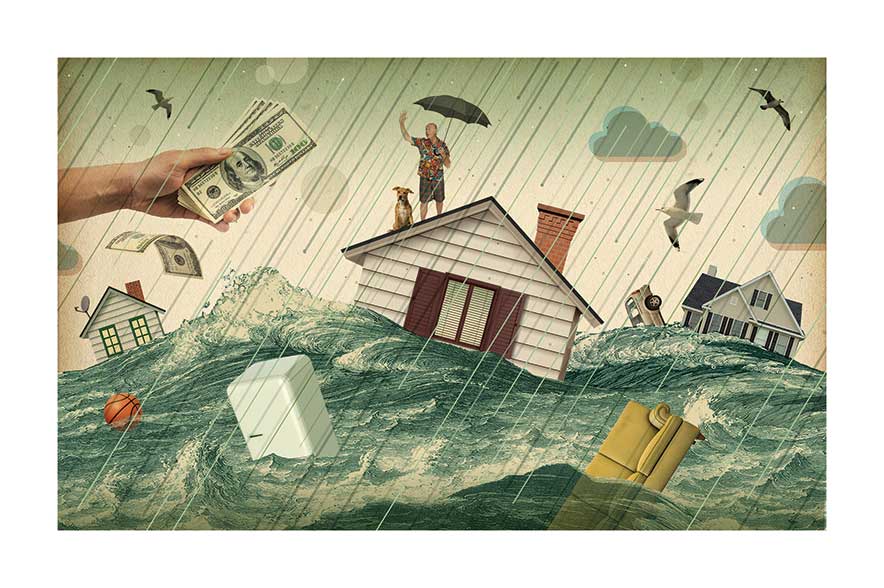Revisiting Response
Hurricane Sandy, which wreaked havoc in 24 states in 2012, was ground-breaking in its destruction. The largest Atlantic hurricane on record and the second-costliest hurricane in U.S. history, it caused upwards of $68 billion in estimated damages. It could also turn out to be a landmark event in the evolution of disaster response and relief.
In a recently announced move, the Federal Emergency Management Agency (FEMA) agreed to reopen and review relief claims by homeowners affected by Sandy, after some victims alleged that the damage assessment reports were fraudulently altered to minimize payouts.
FEMA officials will review the claims submitted by 141,800 homeowners who filed under the national flood insurance program. If it is found that a homeowner received less in compensation than was warranted, the applicant may receive additional funds, up to $250,000 for property damage and $100,000 for dwelling contents.
Given the number of homeowners who can request a claim review, and the hundreds of thousands of dollars that can be allocated for each claim, the amount of federal funding at stake is substantial. New Jersey homeowners represent the bulk of these claims, with 74,052 damage claims originally filed, according to the office of Rep. Frank Pallone, Jr. (D-NJ).
In some ways, this is a new development in federal disaster response, says Marko Borne, a former director of policy and deputy director of preparedness for FEMA who is now a principal with Booz Allen Hamilton. In the past, there have always been opportunities for disaster victims to appeal relief claims they felt to be inadequate.
The difference this time around is that FEMA reached out proactively. The agency announced to the public that it was reopening the process, and it mailed all Sandy claimants to make them aware of the new process and opportunity for review. “FEMA actually contacted folks to see if they wanted to have their claim reviewed,” Borne tells Security Management.
The new review comes after months of allegations that engineering companies—or the insurance companies that hired them—produced false or altered reports to reduce payouts to homeowners with damages. The allegations were highlighted in a report on 60 Minutes, during which Brad J. Kieserman, FEMA’s deputy associate administrator for insurance, said that he had seen evidence of fraudulent reports by unlicensed engineers.
FEMA has been conducting an internal inquiry, and the U.S. Department of Homeland Security’s inspector general is also investigating the reports. Congress has been asked to weigh in as well.
On the ground, there was consternation from homeowners who were surprised to find that their relief claims had been “lowballed,” says Alex Greer, a scholar at the University of Delaware’s Disaster Research Center. Greer interviewed many storm victims in New Jersey for an academic research project, and found many shocked over what they thought were basic areas of coverage that were not funded.
For many homeowners in pricey coastal areas, the insurance programs’ limits fall far short of actual damages. Given this, some homeowners take out a secondary policy. However, secondary policies usually do not kick in until the maximums of primary policies are reached, which did not happen with low-funded claims.
In some cases, this can cause a financial down-spiral, and some become “handcuffed by the aid sources,” Greer explains. For example, to fix uncompensated damages, some homeowners may take out a small business administration loan, which in some cases requires a second mortgage to pay back. “Even if you want to leave, you couldn’t,” he says.
To conduct the new review, FEMA has asked insurance companies who handle federal flood insurance claims to provide information on claims filed from October 27 through November 6, 2012. Of those, FEMA is first tackling the claims filed by about 15,000 homeowners who also had engineering reports conducted. This will allow the agency to identify those who potentially received less relief than they were entitled to because of suspect engineering reports, according to FEMA officials.
After FEMA completes its review of the initial 15,000 filings with engineering reports, the agency will turn its attention to the remainder of the 141,800 Hurricane Sandy claims filed by homeowners. In addition, FEMA has agreed to take steps to guarantee that those who filed insurance claims will be granted access to all engineering reports.
Some federal lawmakers from the New Jersey and New York areas, who lobbied FEMA to reopen the process, have argued that the lowballed claims are indicative of an improper understanding of the objectives of a disaster relief program.
However, if claims were lowballed, it is still unclear why. Insurance and engineering firms claim that they have done nothing wrong. They insist that there are no financial motives to cheat because they do not receive more federal dollars for paying out fewer claims. Instead, most insurers are paid a percentage fee based on total payouts, and the money comes primarily from FEMA, not private companies.
Nonetheless, these problems illustrate that every large-scale disaster relief operation is vulnerable to fraud, waste, and abuse, Borne says.
But with claims reopened and the process under investigation, FEMA officials have the opportunity to establish what went wrong with the claims process, and why.
Once the facts are clear, FEMA can start to institutionalize improvements, so that the process is more equitable and less vulnerable to fraud in the future, Borne adds. What these reforms will look like is not yet known; among other things, FEMA needs to determine whether systemic changes are needed, or if tighter controls on potentially errant actors will be sufficient enough to prevent fraud.
“There’s a difference between the system failing,” Borne says, “and people failing.”
